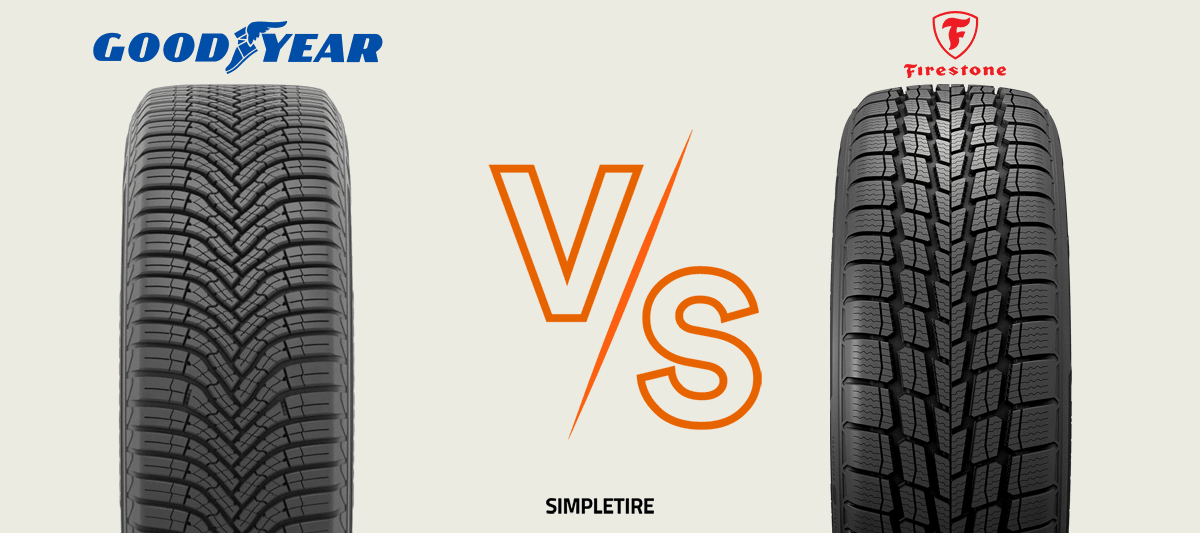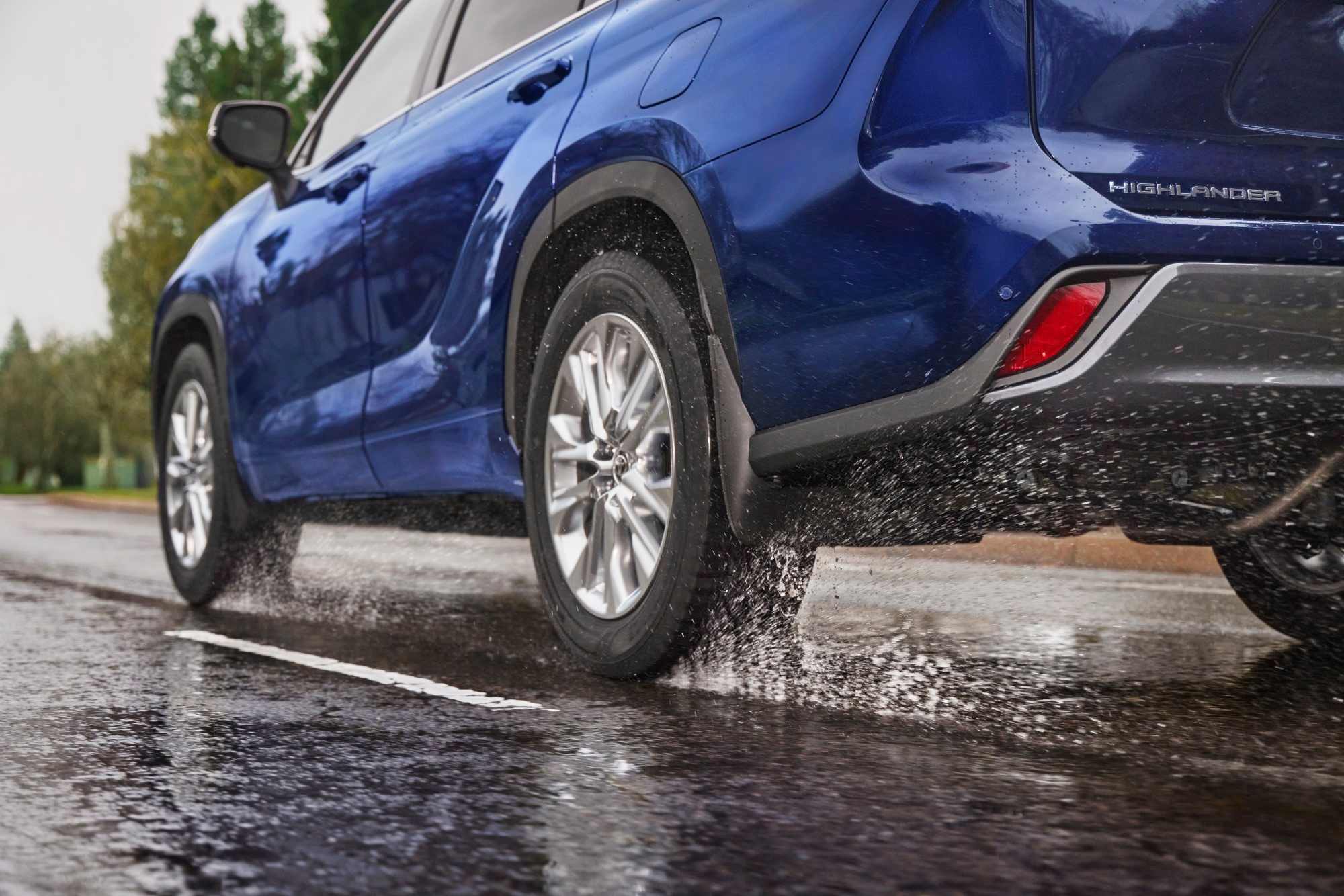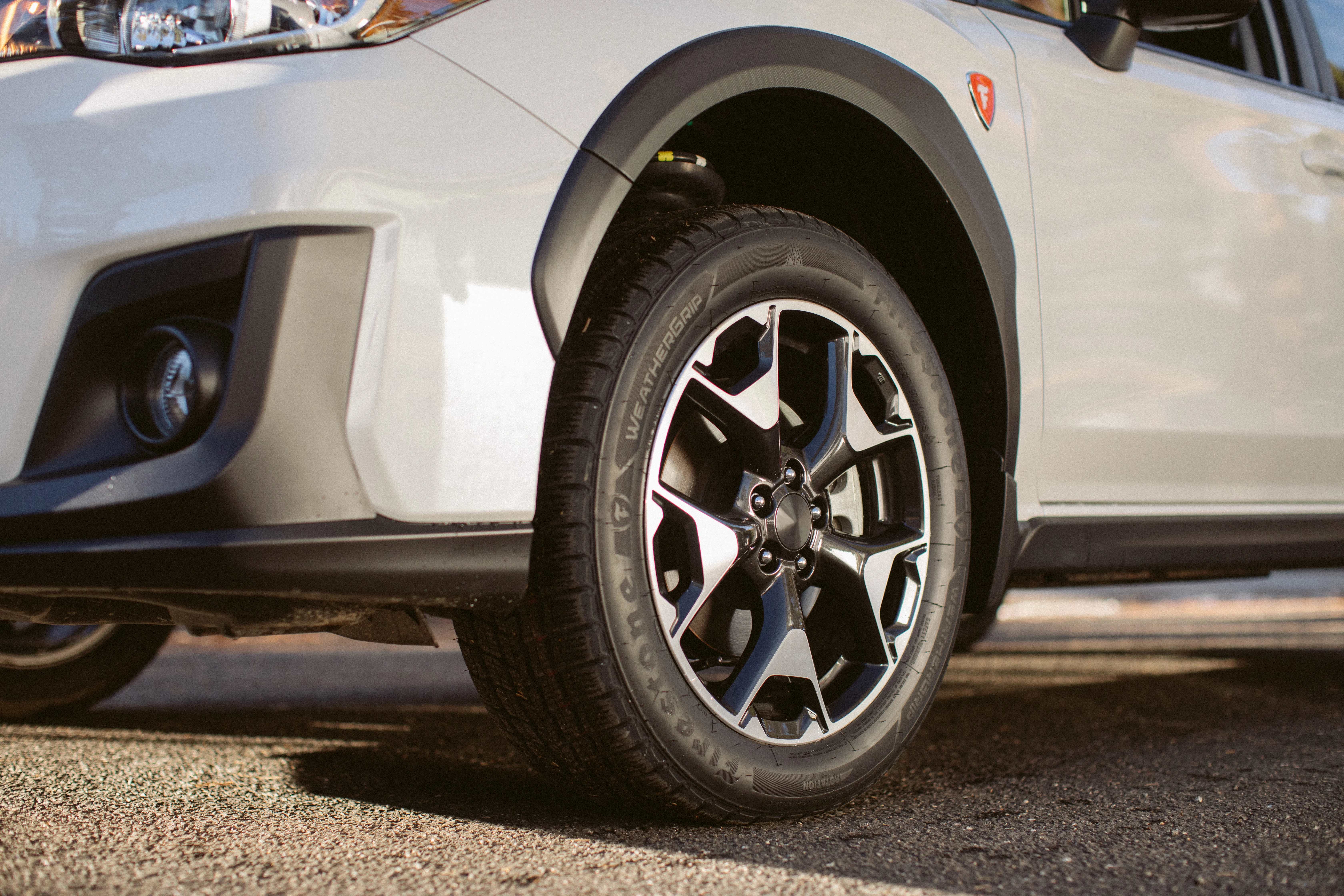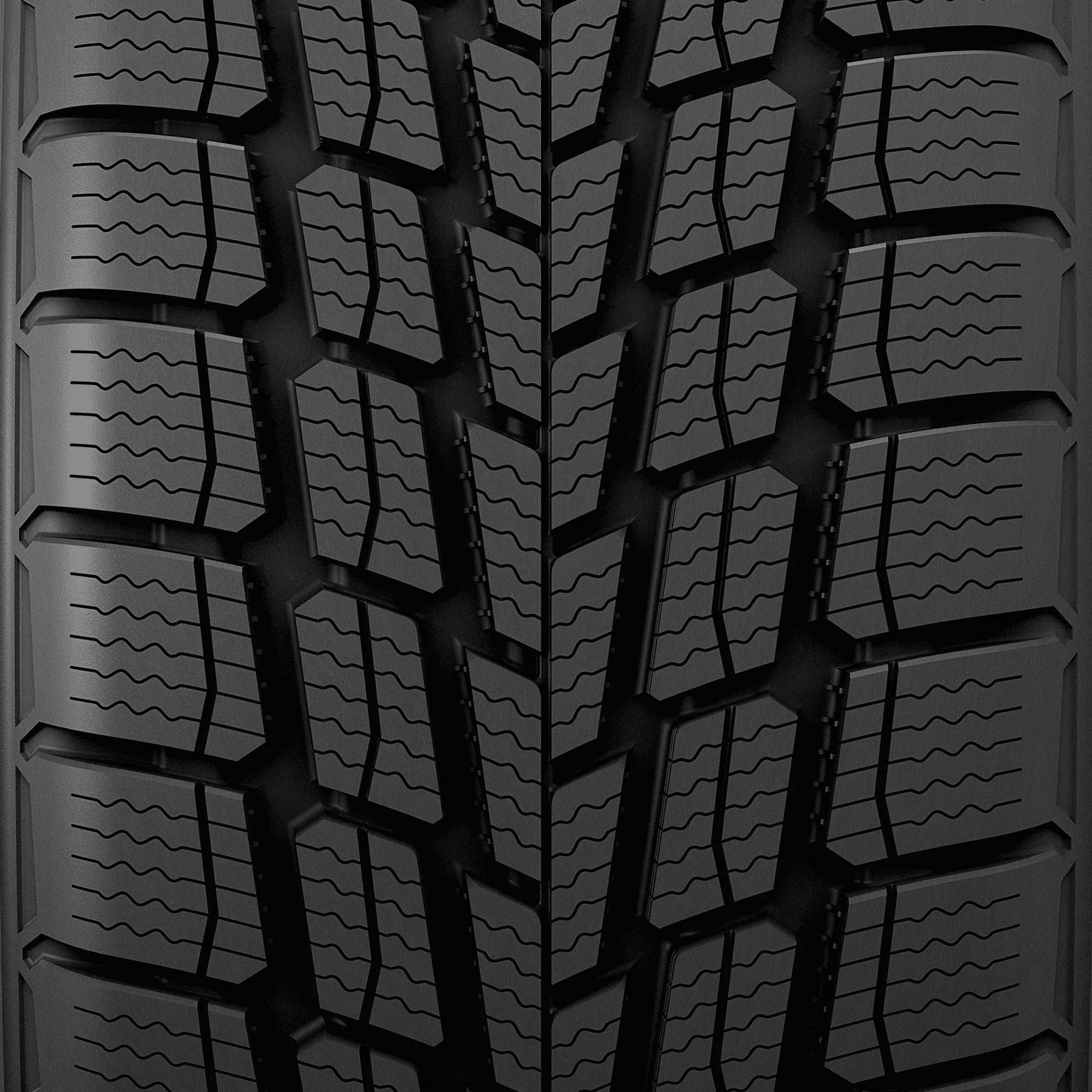Compare
Best price guarantee
Free tire replacement coverage
24/7 roadside assistance
Easy returns

What’s the straight story with all-weather tires, anyway? All-weather tires are a category that’s rather new in the tire world, filling a slot where all-season tires aren’t quite capable. If you’ve ever tried to get from point A to point B when there are 3-4 inches of snow on the roads, you’ve already found out that most all-season tires are going to fall short of being able to get the job done for you (in most cases). So all-weather tires are optimized for enhanced winter traction with redesigned tread formulations, more aggressive tread designs, more dense sipe networks, and other features that are all designed to deliver dependable traction in snow and slush. In other words, they’re designed to more or less split the difference between all-season and winter tires without the hassle of dismounting winter tires and storing them once temperatures get above 40-45 degrees Fahrenheit.
Are you familiar with SimpleScore? SimpleScore is the system the SimpleTire team devised to give you a quick, at-a-glance idea of a tire’s strengths and weaknesses. We look at the tire’s manufacturer info, technical info, specs, customer reviews, and other data points for any given tire, and then use that to determine a numerical value from 1-10 for traction, handling, longevity, and an overall average SimpleScore. For the Firestone WeatherGrip and Goodyear Assurance WeatherReady 2, the SimpleScore numbers shake out like this:
Firestone Weathergrip
- Traction: 8.6
- Handling: 8.6
- Longevity: 9.2
- Overall average SimpleScore: 8.6
Goodyear Assurance WeatherReady 2
- Traction: 9.1
- Handling: 9.1
- Longevity: 9.2
- Overall average SimpleScore: 9.1
As you can see, those are a very solid set of SimpleScore ratings for any tire, regardless of the manufacturer or design. SimpleScore is handy, but it doesn’t take you down to the details that tell the story of a tire’s capabilities. Let’s unpack what the Firestone and the Goodyear are all about with this comparison review:
Goodyear Assurance WeatherReady 2 tires

Let’s take a look at the Goodyear Assurance WeatherReady 2, a premium Grand Touring tire designed to the performance parameters of an all-weather tire. Goodyear upgraded their popular WeatherReady a bit, and the Assurance WeatherReady 2 with an environmentally sustainable, silica-rich, soy-based rubber formulation for dependable grip and excellent wear properties. The internal construction of the Goodyear Assurance WeatherReady 2 includes two wide steel belts that support a single-ply polyester casing and a polyamide layer that offers secure high-speed stability, comfort, and direct steering response.
You can rely on the Assurance WeatherReady 2 for year-round traction; its directional tread design includes a system that incorporates outboard ribs for enhanced grip on wet or snowy roads, Goodyear’s 3D TredLock Technology Blades, and specially designed sipes toward the center block of the tread. While it’s just intuitive that most tires will start sacrificing traction and performance as tread depth gets thinner, Goodyear’s Evolving Traction Grooves are designed to keep providing grip as the miles pile up and tread depth wears down. Sweeping Tread Grooves and the tire’s circumferential grooves work together as a comprehensive system that efficiently whisks water from the tire’s contact patch and fights the tendency to hydroplane on a wet road.
Performance in snow and slush gets an upgrade from Zigzag Biting Edges along the tire’s inboard ribs, earning the Goodyear Assurance WeatherReady 2 the tire industry’s Three Peak Mountain Snowflake certification for severe winter service. Goodyear backs the Assurance WeatherReady 2 with a 60,000 mile limited manufacturer tread life warranty. SimpleTire’s price on the Goodyear Assurance WeatherReady 2 starts at $204.99 per tire.
Firestone Weathergrip tires

The Weathergrip from Firesetone is a premium all-weather tire with the Three Peak Mountain Snowflake certification; Firestone loaded up this tire with features like their Hydro-Grip Technology Package that’s designed around a fat, rounded contact patch, chamfered shoulder blocks, full-depth grooves, and open shoulder slots, all of which come together to work as a system for an advantage in grip and performance. Winter traction comes from Firestone’s Snow Traction Claw Technology, a pattern of snow vices on the intermediate ribs, high-density zigzag sipes, and interlocking grooves, and the SimpleTire team gives this tire a SimpleScore of 8.6 for traction. Internal construction details of the Firestone Weathergrip include a single-ply nylon casing capped by a steel belt package and a nylon reinforcement layer.
The Firestone WeatherGrip is covered by a 65,000 mile warranty, enough to pull in a SimpleScore of 9.2 in the longevity category. Braking performance, cornering, and steering response are accurate, quick, and neutral for a SimpleScore of 8.5 for handling. SimpleTire’s price on the Firestone Weathergrip starts at $125.99 per tire.
Goodyear Assurance WeatherReady 2 vs Firestone Weathergrip tires on traction
When it comes to the traction category, both the Goodyear Assurance WeatherReady 2 and the Firestone Weathergrip have the Three Peak Mountain Snowflake rating, which is pretty significant right out of the gate since the tire industry sets the bar pretty high for that certification. Both tires are obviously very capable, but the Goodyear comes along with a SimpleScore of 9.1 for traction vs 8.6 for the Firestone. The Goodyear’s Evolving Traction Grooves are a real plus in this department; they’re molded into the tread in such a way that they actually expand and open up as the tread depth gets thinner, allowing them to continue to dig in and deliver grip as the miles pile up. Features like Zigzag Biting Edges and 3D Tredlock Technology Blades round out the package for traction with the Goodyear, and our decision is:
ADVANTAGE: Goodyear Assurance WeatherReady 2
Goodyear Assurance WeatherReady 2 vs Firestone Weathergrip tires on handling

When it comes to handling SimpleScores, the spread is exactly the same: 9.1 SimpleScore for the Goodyear vs 8.6 for the Firestone. It just makes sense that handling and traction are tied in pretty closely with each other; if a tire can’t get a good grip and good braking performance, then it’s not going to perform well going into a corner or around a curve or exit ramp. One of the biggest factors with handling is the tire’s rigidity; as any vehicle starts into a curve or a corner, its weight and momentum try to keep it moving in a straight line. That puts a lot of stress on the sidewall and shoulder, leading to deformation and “tread squirm” of the tread itself. The internal construction and interlocking tread features of the Assurance WeatherReady 2 give it excellent rigidity, standing up to tread squirm during a fast maneuver. Neither tire really delivers what you’d expect from a race-inspired summer or ultra-high-performance tire, but the Goodyear Assurance WeatherReady 2 gets the nod here. Our decision:
ADVANTAGE: Goodyear Assurance WeatherReady 2
Goodyear Assurance WeatherReady 2 vs Firestone Weathergrip tires on longevity
When it comes to longevity SimpleScores, Goodyear and Firestone are dead even with SimpleScores of 9.2 for each. The Goodyear is covered by a 60,000 mile limited manufacturer’s tread life warranty vs 65,000 miles for the Firestone, which is some pretty great mileage coverage any way you slice it. This one’s an easy call:
ADVANTAGE: TIE
When to use each
When it comes to dependable traction year-round, the Firestone Weathergrip and Goodyear Assurance WeatherReady 2 are both really strong options in all-weather tires. As noted above, all-weather tires are a good choice when you have to get through difficult winter weather, but you don’t want the headaches that go with specialized winter tires. Winter tires use a softer tread compound that stays pliable for traction at subfreezing temperatures (think the traction of a rubber boot vs. a hard-rubber hockey puck), but that tread formulation is softer and wears quickly on warmer days. When temperatures get above 40-45 degrees, tire manufacturers recommend swapping your winter tires for all-season tires again - leaving you with the headache of dismounting them and finding a place to store them for the next nine months until winter returns. All-season tires are a great way around that and can perform in just about any kind of winter weather other than a foot of snow or a sheet of ice. If that is your situation, you can’t go wrong with the Firestone or the Goodyear.
Which one should you choose?

Honestly, this one’s a tough call. Both tires rank very respectably in SimpleScore numbers, with 8.6 for the Firestone and 9.1 for the Goodyear, but there’s a big price spread between the two, with a list price of $125.99 for the Firestone vs $204.99 for the Goodyear. Is there enough of a difference in performance to justify that price disparity between the two tires? Both the Firestone Weathergrip and Goodyear Assurance WeatherReady 2 are very capable in difficult, challenging weather conditions and slick, snowy roads. Is there enough difference in performance to justify the price disparity between the Goodyear and the Firestone? Yes, but that really comes down to your budget, in the end. We’d put it this way: if you can afford the Goodyear Assurance WeatherReady 2, then it’d be a great choice for you. If you want to save a little (more than a little, really) on the price of a full set of tires, then go with the Firestone Weathergrip. We’re confident you won’t be making a bad call either way.
Ready to find the perfect tires?
Search By